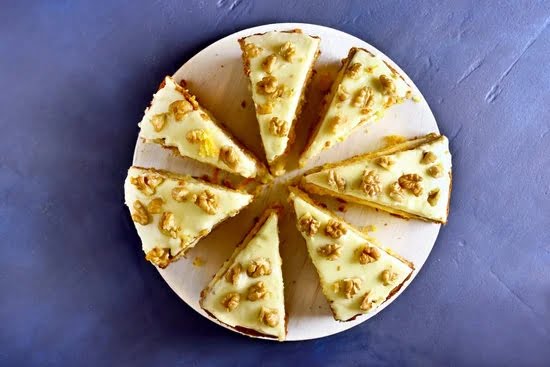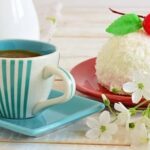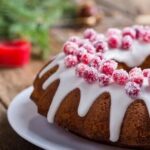Cake decorating can seem like a daunting task for beginners, but with the right tips and techniques, anyone can create beautiful and professional-looking cakes. Whether you’re an aspiring baker or someone who simply enjoys making sweet treats, this article will guide you through the art of cake decoration and provide you with all the necessary tools, tips, and tricks to get started.
In this comprehensive guide, we will cover everything from selecting the perfect cake for decoration to mastering piping techniques, working with fondant, creating charming cake toppers, troubleshooting common issues, and more. With step-by-step instructions and expert advice, you will be empowered to unleash your creativity and transform plain cakes into works of art.
No matter your skill level or previous experience in baking or decorating cakes, this article is designed specifically for beginners. By following these easy-to-understand tips and techniques, you’ll quickly build your confidence and develop the skills needed to create stunning cake decorations. So let’s dive in and discover the exciting world of cake decoration together.
The Essential Tools and Equipment for Cake Decorating
Cake decorating is a beautiful and creative art that allows beginners to express their creativity through the use of various tools and equipment. In order to achieve professional-looking cakes, it is crucial for beginners to have the essential tools and equipment for cake decorating. Here is a beginner’s guide to help you get started:
- Cake Pans: The foundation of any beautifully decorated cake starts with the right cake pan. There are various shapes and sizes available, such as round, square, and rectangular pans. It is important to invest in quality pans that are sturdy and provide even heat distribution for better baking results.
- Offset Spatula: An offset spatula is a must-have tool for smoothing buttercream, spreading fillings, and creating clean edges on your cakes. It has a long, narrow blade with a bent handle that allows you to easily maneuver around the sides of your cake.
- Piping Bags and Tips: Piping bags and tips are essential for creating different designs and textures on your cakes. A set of piping tips usually includes round tips for outlines and lettering, star tips for borders and rosettes, leaf tips for making foliage, and petal tips for creating flowers.
- Turntable: A turntable is an incredibly useful tool that allows you to easily rotate your cake while you work on it. This helps in achieving smooth finishes and even designs without having to constantly move around the cake.
- Bench Scraper: A bench scraper or icing smoother is used to create sharp edges on cakes by scraping off excess icing from the sides. It also helps in achieving straight sides when stacking multiple layers.
- Fondant Rolling Pin: If you plan on working with fondant, a fondant rolling pin is necessary to roll out your fondant evenly to cover your cakes.
Remember that these are just some of the basic tools needed for cake decorating as a beginner. As you progress in your skills and techniques, you may find the need to invest in additional tools and equipment. It is important to choose quality products that are durable and will last you through many cake decorating projects.
re>
| Essential Tools | Equipment |
|---|---|
| Cake Pans | Turntable |
| Offset Spatula | Bench Scraper |
| Piping Bags and Tips | Fondant Rolling Pin |
re>
Having these essential tools and equipment for cake decorating will set you up for success as a beginner. With these items in your toolkit, you will be able to create beautiful cakes with confidence.
Selecting the Perfect Cake for Decoration
When it comes to cake decorating, selecting the right type and flavor of cake is just as important as the design itself. The texture and taste of the cake can greatly impact the overall success of your decoration. Here are some tips for selecting the perfect cake for decoration.
Types of Cakes
There are various types of cakes you can choose from, and each type has its own unique characteristics that can affect your decoration process. Sponge cakes are light and airy, making them ideal for layered cakes with intricate designs. Butter cakes have a denser texture and can hold up well to heavy decorations like fondant or buttercream flowers. Chocolate cakes are a popular choice due to their versatility and ability to pair well with different fillings and frostings.
Flavor Combinations
In addition to considering the texture of the cake, it’s important to think about flavor combinations that will complement your chosen decorations. Classic combinations like chocolate with vanilla or lemon zest with raspberry never fail to please. If you’re feeling more adventurous, consider trying unexpected flavor pairings such as lavender with honey or matcha green tea with white chocolate.
Avoiding Common Pitfalls
When choosing a cake for decoration, it’s best to avoid flavors that may clash with certain toppings or fillings. For example, if you plan on using a fruit-based filling, avoid pairing it with an overpoweringly sweet or rich cake flavor as it may create an unbalanced taste. Additionally, be mindful of any dietary restrictions or allergies your guests may have when selecting a cake flavor.
Remember, experimenting is key when finding the perfect combination of cake type and flavor for your desired decoration. Don’t be afraid to try new things and adjust accordingly based on personal preferences and feedback from those who get to enjoy your delicious creations.
Preparing Your Cake Canvas
When it comes to cake decorating, having a well-prepared cake canvas is essential. This section will guide beginners through the process of properly leveling their cakes, applying a crumb coat, and layering their cakes for optimal results.
To start off, it’s important to ensure that your cake layers are level. This can be achieved by using a long serrated knife or a cake leveler. Place the knife horizontally on top of the cake and carefully slice off any uneven parts. Remember to do this gently and take your time to avoid damaging the cake.
Once your layers are leveled, it’s time to apply a crumb coat. A crumb coat is a thin layer of frosting applied to seal in any loose crumbs before adding the final layer of frosting. To achieve a smooth finish, start by applying a thin layer of frosting all over the cake using an offset spatula.
Make sure to cover the entire surface including the sides. This initial coat doesn’t need to be perfect as it will be covered up with more frosting later.
After applying the crumb coat, it’s important to let it set before moving on to adding additional layers or decorations. Place your cake in the refrigerator for about 15-20 minutes to allow the frosting to firm up and prevent any crumbs from appearing in your final layer of frosting.
Once the crumb coat has set, you can proceed with adding additional layers if desired. Layering involves stacking multiple cakes on top of each other with a layer of frosting or filling in between. To ensure stability, place strips of parchment paper around the edges of your cake board before placing your first layer down. This will catch any excess frosting or filling that may spill out during assembly.
In summary, proper leveling ensures that you have a solid foundation for decorating your cake. The crumb coating step helps create a smooth base for your final layer of frosting, and layering adds height and dimension to your cake. Taking the time to prepare your cake canvas will greatly enhance the overall look and taste of your decorated creation.
- Level your cake layers using a serrated knife or cake leveler.
- Apply a crumb coat by spreading a thin layer of frosting all over the cake.
- Let the crumb coat set in the refrigerator before proceeding.
- Layer multiple cakes with a filling in between using parchment paper strips for stability.
Getting Started with Basic Buttercream
Buttercream frosting is a classic choice for cake decorating and provides a smooth and creamy finish. Whether you’re a beginner or have some experience, learning the basics of buttercream can help you achieve that professional look on your cakes. This section will guide you through simple recipes and techniques to create a smooth finish with buttercream.
Choosing the Right Buttercream Recipe
Before you begin, it’s important to choose the right buttercream recipe for your cake. There are various types of buttercream, including American buttercream, Swiss meringue buttercream, and Italian meringue buttercream. For beginners, American buttercream is often the easiest and most forgiving option. It is made from powdered sugar, unsalted butter, vanilla extract, and milk or cream. Its simplicity makes it perfect for practicing basic techniques.
The Crumb Coat: A Must-Try Technique
To achieve a beautifully smooth finish on your cake, it is essential to start with a crumb coat. A crumb coat is a thin layer of frosting that locks in any loose crumbs before applying the final layer of buttercream. To crumb coat your cake, first level and stack your layers according to the instructions in Section 4.
Once stacked, apply a thin layer of buttercream using an offset spatula or icing smoother to cover the entire cake. This will seal in any crumbs and ensure that your final layer goes on smoothly.
Smooth as Silk: Techniques for an Even Finish
To achieve a flawlessly smooth finish on your cake using basic buttercream, there are several techniques you can try:
- Viva Paper Towel Method: After applying your final layer of buttercream, gently press a Viva paper towel onto the surface of the cake and smooth it with your hands or fondant smoother. The texture of the towel helps to create an even finish.
- Hot Knife Method: Dip a metal spatula or icing smoother into hot water, then dry it well. Run the heated spatula over the buttercream, smoothing it out with long strokes. The heat helps to melt away any imperfections and achieve a silky finish.
- Smoothing with an Offset Spatula: Hold the offset spatula against the side of the cake at a slight angle. Slowly rotate the turntable while scraping off excess buttercream, creating a smooth surface.
By practicing these techniques and experimenting with different methods, you’ll soon become confident in creating beautifully smooth buttercream finishes for your cakes. Don’t be afraid to try different tools and techniques to find what works best for you.
Mastering Piping Techniques
Piping is one of the most essential techniques in cake decorating. It allows you to create beautiful borders, intricate designs, and stunning rosettes that can elevate the overall look of your cake. In this section, we will provide step-by-step instructions on how to master piping techniques for beginners.
To start with, it’s important to have the right tools and equipment. A piping bag and various tips are necessary for different piping techniques. Some commonly used tips include round tips for borders and writing, star tips for rosettes and shells, and leaf tips for foliage designs. Experimenting with different tip sizes and designs will help you discover your own preferred style.
Before piping, it is crucial to prepare your buttercream or frosting correctly. The consistency should be firm enough to hold its shape but also soft enough to squeeze through the piping bag smoothly. If it’s too stiff, add a small amount of milk or water; if it’s too runny, add more powdered sugar or butter.
Once you have your tools and properly prepared frosting, you’re ready to start piping. Begin by practicing basic lines and shapes on a parchment paper or on a practice board before moving on to your cake. Practice steady pressure while squeezing the bag and experiment with different hand movements to create different effects.
| Piping Technique | Description |
|---|---|
| Border Piping | The process of creating decorative edges around the top or bottom of the cake. |
| Rosette Piping | A technique where icing is piped in a circular motion to create rose-like designs. |
| Shell Piping | Create shell-like shapes by piping icing in a back-and-forth motion. |
| Drop Flower Piping | Pipe a series of small, circular motions to create flower-like designs. |
Remember, practice makes perfect when it comes to mastering piping techniques. Don’t be discouraged if your first attempts aren’t exactly as you envisioned. With time and practice, you will gain confidence and improve your skills.
Let’s Get Creative with Fondant
Fondant is a versatile cake decoration that allows for incredible creativity and flawless finishes. It is a smooth, pliable icing that can be rolled out and draped over cakes to create a sleek and polished look. Fondant can also be shaped and molded into intricate designs, making it the perfect medium for creating elaborate decorations. In this section, we will explore some tips and techniques for working with fondant that will help beginners achieve professional-looking results.
Preparing Your Fondant
Before working with fondant, it is important to prepare it properly. Start by kneading the fondant until it becomes soft and pliable. If you find your fondant is too sticky, dust your work surface with powdered sugar or cornstarch to prevent sticking. Conversely, if the fondant is dry and cracking, apply a small amount of shortening or vegetable oil to lubricate it.
Rolling Out Fondant
When rolling out fondant, use powdered sugar or cornstarch to dust your work surface and rolling pin. This prevents the fondant from sticking as you roll it out to your desired thickness.
Roll the fondant in one direction at a time rather than back and forth as this helps maintain an even thickness. Aim for a thickness of about 1/8 inch or less, as thicker fondant can be difficult to work with and may not provide the desired smooth finish.
Applying Fondant to Cakes
To apply fondant on top of a cake, make sure that your cake is properly frosted with buttercream or ganache as this creates an adhesive layer for the fondant to stick to. Gently lift the rolled-out fondant using both hands or by wrapping it around a rolling pin for support.
Place it over the cake while carefully smoothing out any air bubbles or wrinkles using your hands or a straight-edge smoother. Trim off any excess fondant with a sharp knife or pizza cutter.
Adding Decorations
Fondant is incredibly versatile when it comes to creating decorations. You can use fondant cutters or molds to create shapes, flowers, and intricate designs. Add food coloring to your fondant if you want to achieve different colors for your decorations. To attach the decorations onto the cake, use a small amount of water or edible glue as an adhesive. Allow the decorations to dry and set before serving or transporting the cake.
Working with fondant may seem intimidating at first, but with practice and patience, beginners can achieve stunning results. Remember to start small and gradually build your skills as you become more comfortable handling fondant. The possibilities for creating unique and personalized cakes are endless with this versatile cake decoration.
Making Charming Cake Toppers
Cake toppers are a fun and creative way to add a personal touch to your decorated cakes. Whether you’re looking to make a simple design or an intricate masterpiece, making your own cake toppers allows you to unleash your creativity and truly make the cake your own. This section will provide DIY ideas and step-by-step instructions for beginners on how to make charming cake toppers.
One popular option for cake toppers is using edible materials such as fondant or gum paste. These materials can be molded, shaped, and colored to create any design you desire. For beginners, it’s recommended to start with simple designs such as flowers, animals, or letters. You can find pre-made molds or cutters that make it easier to create these shapes, or you can try your hand at freehand sculpting.
Another option for making cake toppers is using non-edible materials such as paper or clay. These materials allow for more intricate designs and can be crafted well in advance of decorating the cake. Paper cake toppers can be made using templates or cutting machines, while clay cake toppers require some sculpting skills and painting expertise.
| Idea | Description |
|---|---|
| Fondant Flowers | Use fondant or gum paste to create beautiful flowers in various colors. |
| Animal Figures | Sculpt cute animal figures out of fondant or modeling chocolate. |
| Paper Cutouts with Words | Create custom messages or names using paper cutouts attached to toothpicks. |
| Clay Figurines | Create miniature figurines out of clay, such as wedding couples or cartoon characters. |
Whether you choose to use edible or non-edible materials, it’s essential to make sure your cake toppers are food-safe and won’t harm the cake or its consumers. Consider using supports like toothpicks or wires for stability, and always wash any non-edible materials before placing them on the cake.
Remember, practice makes perfect when it comes to making charming cake toppers. Start with simple designs and gradually challenge yourself as you gain more confidence in your decorating skills. With a bit of patience and creativity, you’ll soon be able to create stunning cake toppers that will impress everyone who sees your decorated cakes.
Troubleshooting Common Cake Decorating Issues
Baking and decorating a cake can be a fun and rewarding experience, but it’s not always smooth sailing. As a beginner, you may encounter some common cake decorating issues along the way. Don’t worry though, as there are quick fixes and expert advice available to help you overcome these challenges.
One common issue that beginners face is uneven layers or a lopsided cake. To fix this problem, use a long serrated knife or a cake leveler to trim off any domes or high spots on your cakes. This will ensure that the layers are level and stack evenly. If you find that your cake is leaning to one side, try using dowel rods placed strategically within the layers to provide support and stability.
Another issue that can arise is air bubbles in your fondant or buttercream icing. Air bubbles can create unsightly bulges and ruin the smooth look of your cake. To fix this problem, use a pin or toothpick to gently poke the air bubbles from the surface of the fondant or icing. Smooth out any remaining imperfections with a fondant smoother or an offset spatula.
Coloring inconsistencies in your buttercream icing can also be a common problem. If you find that your colors appear streaky or uneven when mixing them into your icing, try using gel food coloring instead of liquid food coloring. Gel food coloring provides more intense colors without thinning out your icing too much.
If you encounter an issue with piping, such as inconsistent pressure causing varying thicknesses in your borders or rosettes, practice is key. It takes time to develop control over piping bags and achieve smooth, consistent lines. Start by practicing on parchment paper before moving on to decorating cakes directly.
Remember, if you come across any other cake decorating issues not covered here, don’t hesitate to seek expert advice from experienced bakers or join online communities where fellow decorators can share their knowledge and offer guidance.
By being aware of common cake decorating issues and having quick fixes and expert advice at your disposal, you’ll be better equipped to handle any challenges that arise during the decorating process. Don’t let these issues discourage you; instead, use them as learning opportunities to grow and improve your skills. With practice, patience, and perseverance, you’ll soon be creating beautiful cakes that will impress friends and family alike.
The Finishing Touch
Displaying and storing your decorated cake properly is just as important as the decorating process itself. After all, you’ve put in so much time and effort to create a beautiful masterpiece, so you’ll want to ensure that it stays in perfect condition until it’s time to serve or transport it. Here are some tips for displaying and storing your cake with care:
1. Displaying Your Cake:
When it comes to displaying your cake, presentation is key. You want to showcase your creation in the best possible way. Consider using a cake stand or a decorative platter that complements the design of your cake. This will not only elevate its appearance but also make it easier for guests to admire.
2. Level Surface:
Ensure that the surface on which you’re displaying your cake is level. This will prevent any potential accidents or mishaps where the cake might slide or topple over.
3. Room Temperature:
It’s ideal to display your decorated cake at room temperature, away from direct sunlight or heat sources like stoves or radiators. Extreme temperatures can cause issues such as melting buttercream or fondant, resulting in a ruined design.
4. Storing Your Cake:
- Buttercream Cakes: If you have leftover cake, store it in an airtight container at room temperature for up to three days.
- Fondant Cakes: Fondant-covered cakes can be stored at room temperature for up to two days if the filling doesn’t require refrigeration.
- Refrigeration: For cakes with perishable fillings such as fresh fruit or mousses, refrigerate them in an airtight container. Note that condensation may form when you remove them from the fridge, so handle them with care.
- Freezing: If you need to store your decorated cake for an extended period, consider freezing it. Wrap the entire cake (without decorations) tightly in plastic wrap and then place it inside an airtight container or a freezer bag. Frozen cakes can last up to three months when properly stored.
Remember that it’s important to remove your cake from the fridge or freezer well in advance of serving to allow it to come to room temperature and regain its flavor and texture. By following these tips, you’ll ensure that your decorated cake looks as good as it tastes, whether you’re displaying it at a special event or storing it for future enjoyment.
Conclusion
In conclusion, this article has provided beginners with a comprehensive guide on cake decorating tips. With the right tools, equipment, and knowledge on selecting the perfect cake and preparing it for decoration, anyone can create beautiful cakes that are sure to impress. The step-by-step instructions and recipes for basic buttercream and fondant work provide a solid foundation for novice decorators to build upon.
It is important to remember that practice makes perfect when it comes to cake decorating. As mentioned throughout the article, mastering techniques such as piping and working with fondant takes time and patience. Beginner decorators should not get discouraged if their first few attempts do not turn out as expected. It is through continuous practice and experimentation that they will improve their skills and create even more stunning cakes.
In addition to practicing, seeking inspiration from professional decorators or participating in workshops can also help beginners expand their creativity and learn new techniques. There is always room for improvement, so don’t be afraid to challenge yourself with more complex designs or try out different types of cake flavors and decorations.
With the knowledge gained from this article and a passion for cake decorating, beginners are now empowered to express their creativity through beautiful cakes. By keeping these tips in mind, continuing to practice, and never being afraid to experiment, beginner decorators will consistently improve their skills and create stunning works of edible art. So go ahead, unleash your creativity, and enjoy the joy of making beautifully decorated cakes for family and friends.
Frequently Asked Questions
What are the 3 tips for preparing to decorate a cake?
When preparing to decorate a cake, there are three important tips to keep in mind. Firstly, make sure to have a clear vision or plan for the design you want to achieve. This includes picking a color scheme, deciding on the overall theme or style, and considering any specific techniques or decorations you want to incorporate. Secondly, gather all the necessary tools and ingredients beforehand so that you have everything easily accessible when it’s time to start decorating.
This includes items like piping bags, spatulas, offset spatulas or palette knives for smoothing frosting, as well as any edible decorations such as sprinkles or fondant shapes. Lastly, it is crucial to properly level and prepare your cake layers before decorating. This involves trimming off any domed tops, layering and filling them evenly with frosting or filling of your choice, and chilling the cake if needed before beginning the decoration process.
What does a beginner need for cake decorating?
For beginners in cake decorating, there are a few essential supplies that are necessary to get started. Firstly, invest in a good quality turntable or rotating cake stand. This will make it easier to work on all sides of the cake without having to constantly reposition yourself. Another important tool is an offset spatula or palette knife for spreading frosting smoothly on the cake surface.
A set of basic piping tips and couplers with corresponding piping bags is also crucial for creating different designs and patterns on the cake’s surface. It is also helpful to have some food coloring gels or liquid colors available for tinting frosting if desired. Lastly, a variety of decorating brushes can be useful for techniques such as painting onto fondant or adding details with edible dusts.
What are the best piping tips for beginners?
When it comes to piping tips for beginners, there are a few types that work well and are versatile enough for various designs. The round tip (such as Wilton tip #3) is commonly used for writing messages on cakes as well as creating basic outlines or dots. The star tip (such as Wilton tip #16) is great for creating rosettes, stars, shells, or borders around the edges of cakes. It can also be used for filling in large areas quickly and easily.
Another useful piping tip for beginners is the petal tip (such as Wilton tip #104), which is perfect for creating flower petals or ruffles on cakes. It can also be used to create ribbons, bows, and other intricate designs. These three basic piping tips provide a good starting point for beginners to experiment with different techniques and designs.

Welcome to our cake decorating blog! My name is Destiny Flores, and I am the proud owner of a cake decorating business named Cake Karma. Our mission is to provide delicious, beautiful cakes for all occasions. We specialize in creating custom cakes that are tailored specifically to each customer’s individual needs and tastes.





